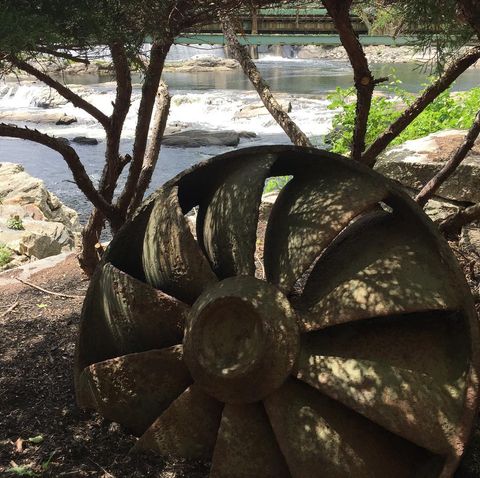
Alongside the pills are the denial and isolation strategies. We focus on only one segment of the white-water system. We may see only the recurring challenges—such as the annual audit or the drop in sales that occurs every Fall. We might instead focus on the part of our life that has remained the same for many years. We still go down to the local tavern and drink with our buddies. We leave the swirling world around us at the front door of this welcoming Bar. Daily rituals of many kinds make it a bit easier to deal with that which is always changing.
Conversely, we might be addicted to the thrilling challenge of fast-moving operations in our organization. There is always a crisis and challenging deadlines. As long as we focus on the short-term, we don’t have to worry about the long-term and serious, deep-seated challenges to our business. We never look down the river to what await us, for the current rapids offer us sufficient “highs”. Neuroscientists tell us that we can easily get addicted to our own adrenaline. Under these conditions, a vacation from the “stress” of work is actually unpleasant—for we are in withdrawal from our own addictive internal chemicals. Similarly, we need the threatening competitor (“it is all win-lose”) as well as toxic (and addictive) company politics (“Can you believe what he/she did! We must counter it!”).
The calm might simply be applied at one moment as a short-term stress-reduction technique: “I am calm. I am perfectly calm!” We take a deep breath, meditate, put on some soothing music, work out in the gym for an hour, curl up for a brief mid-day nap, sit in the hot tub, or talk a long hot shower. We might instead apply some “micro-aggression” against someone lower in the pecking order of our organization or community. There is something calming for some of us when we kick the cat or our daughter or a clerk in our office. Some of these short-term remedies do work. We are calm—but only for a brief moment and sometimes at the expense of other people or our own productivity.
Finally, there is a major, long-term calming strategy. This involves the search for sanctuary (Bergquist, 2017). We find short term relief in the stress-relieving mini-sanctuaries we create (music, hot tub, meditation, etc.). This mini-sanctuary might be a large, soft chair in our living room where we can read or listen to recordings featuring our favorite jazz pianists. We might also find this mini-sanctuary in our garage where we can work on a new cabinet or in a spare room where we set up our easel and paint brushes. However, we long for relief that is not momentary. We find (or create) sanctuaries that last a day or two (festivals, fairs, vacations, etc.). Or we find sanctuaries that can last for a longer period of time–such as spending an extended period of time at a Zen Center or Recovery Center. Traditionally, sanctuaries were often established for people who had lost a battle or violated some societal norm. These losers and transgressors would enter (or escape to) a sanctuary that provides healing and learning. The heiau called “The City of Refuge” on the Big Island in Hawaii has served this important purpose (Bergquist, 2017).
Sometimes sanctuary is a time and a ritual, like evening prayers for the Jew or one of the five times of prayer for the Muslim. Sometimes it is a practice, like stopping in the park to feed pigeons on the way home from work at the end of the day or having a quiet cup of coffee in the staff room of a busy corporation. Not always, but often enough to keep us engaged, these moments take us to a place we call our true home. We are rested and renewed. We say, “Now I am more myself again.” Sanctuary enables us to stop, hide, get away, rest, and become “more myself again.” It enables us to find calm—away from the turbulence of everyday life. Yet, we can’t live in sanctuary all the time. We might heal and learn in a Heiau—but must return to a VUCA-Plus world that continues to do damage and elude comprehension.
Download Article













